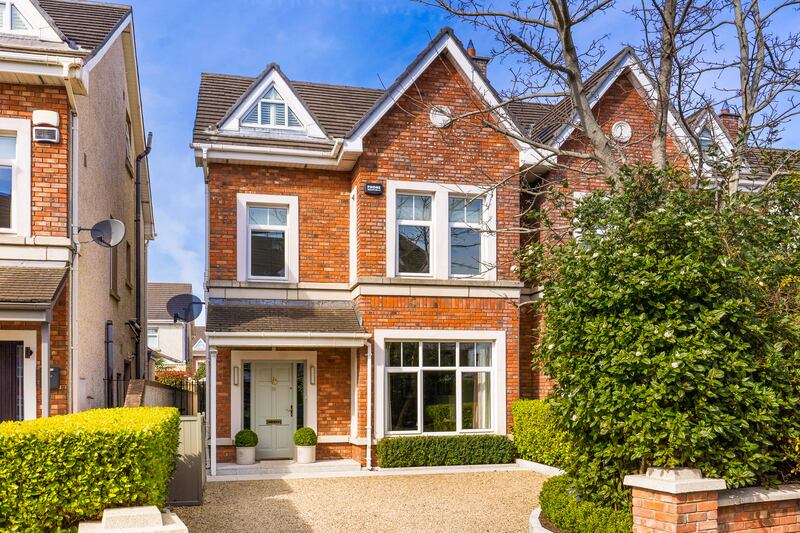We should be less worried about the argument on the exact emission cuts to which farmers have signed up and more concerned that Ireland can come anywhere close to the targets as set down. For a start, the Government has so far only specified how we will reach a 43 per cent emission cut by 2030, while the target is 51 per cent. And then there is the much bigger issue of implementation – of actually doing this.
Either the Government doesn’t really think the targets are achievable at all – and that we will just have to do our “best” – or it has yet to level with people and start putting in place the most far-reaching programme of transformation. Let’s hope it’s the latter.
The debate in recent weeks was entirely predictable and was set up by the decision last year to specify the targets for emissions reduction for each sector as ranges rather than precise figures. This got the political system past the row last year – the goal in politics is often to get through to tomorrow, or the day after at best. But it set up the pitch for the rather depressing debate of recent weeks about who would “win” and who would ” lose” in the row on emissions targets, specifically in farming.
When powerful lobby groups are in action and ministers are at loggerheads, it comes down to finding a plausible way out – and not inflicting too much political damage. It is welcome news that there are now at least agreed targets – in the sense that the debate can now turn to how to achieve them. But the divisive nature of the row, the extraordinary position-taking and the bickering over a per cent here and there, were completely at odds with the severity of the climate crisis. We are far from being on the same page in tackling the crisis.
Smart five-bedroom home in Cabinteely in walk-in condition for €1.05m
Matt Williams: Munster have a sniff as the Champions Cup gets blooming great
The Big Fight by Dave Hannigan: Account of Muhammad Ali in Croke Park a strange time capsule of 1970s Ireland
Sandymount cycle path decision frees council from weeds of lengthy planning process
It may have been business as usual in the political microcosm, but how does it play with younger voters who will face the fuller consequences of climate change in their lifetimes? Younger people, without the organised lobbying used by sectors such as farming and big business, are outside the room when the big decisions are made. Yet they are the ones with most at stake.
Climate change without the pain is about as credible as pretending we can get through the cost-of-living crisis without anyone being worse off
The tactics adopted by the Opposition parties are illuminating. Labour and the Social Democrats both criticised the Government for not agreeing to bigger emissions cuts from agriculture, saying they had ignored the science on the issue. But Sinn Féin played a cynical game, refusing to come down one way or the other on the sectoral emissions question and then afterwards attacking the Government’s “divisive, punitive approach” to climate action – and promising money right left and centre to help households and communities and ensure a ” just transition.”
As a strategy, climate change without the pain is about as credible as pretending we can get through the cost-of-living crisis without anyone being worse off. But clearly Sinn Féin doesn’t see any political mileage in taking a stand on the issue. Maybe – in terms of narrow political calculus – it is right, despite the regular surveys showing people ” support” climate change policies. After all, the fight against climate change brings up questions of big lifestyle changes and costs that everyone prefers to skirt around.
And in the background there is cynicism – sure leave it to the big countries who emit most to sort it out and we will just do what we can. Do many in ”official Ireland” – politicians, senior public servants and so on – have some attachment to this viewpoint too? Putting flesh on the bones of the latest targets is the necessary step to prove otherwise. Otherwise, we will end up with Sláintecare for the climate – a plan that everyone nods towards but which never looks likely to happen.
An economic essential
Apart altogether from the moral imperative of playing our part in the drive to cut emissions, it is also an economic essential. Ireland’s economic model is built on attracting investment and in future big companies will only plan new investments in countries with credible climate strategies. There is a lot of business “greenwashing” going on now, of course – more pretence than real action. But the net is tightening. And the big players, under pressure from investors, customers, staff and regulators, will not invest in countries seen to be climate laggards – and in particular will look for supplies of secure and green energy. To say that the surge in energy prices and the threats to supply from the war in Ukraine underline the case for this would be an understatement.
Irish politics, with its interest on surviving the day, has often been particularly bad at delivering on longer-term projects
Battered by Covid and the worst cost of living crisis in 50 years, the Government deserves some sympathy. But it has to find the time and energy to push the climate agenda forward – to fill in the gap between the targets now announced and how we will get there, and align it with the legally binding carbon budgets.
Delivery is everything. A new High Court division is promised to help speed planning but a wider planning overhaul may be needed here. Ireland simply has to be able to move more quickly on a large investment programme, particularly in offshore wind but also in the electricity infrastructure across the country, where so many projects have been stuck for years in planning and objections.
Irish politics, with its interest on surviving the day, has often been particularly bad at delivering on longer-term projects. But there are a few big things we know we have to do. In particular, if we don’t develop alternative energy sources and have an electricity grid that can deliver them, the whole programme will collapse in on itself. There is no point all driving around in electric cars if they are fuelled by coal-fired power stations.
















